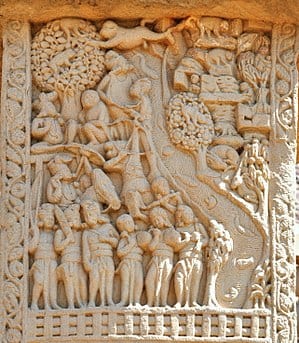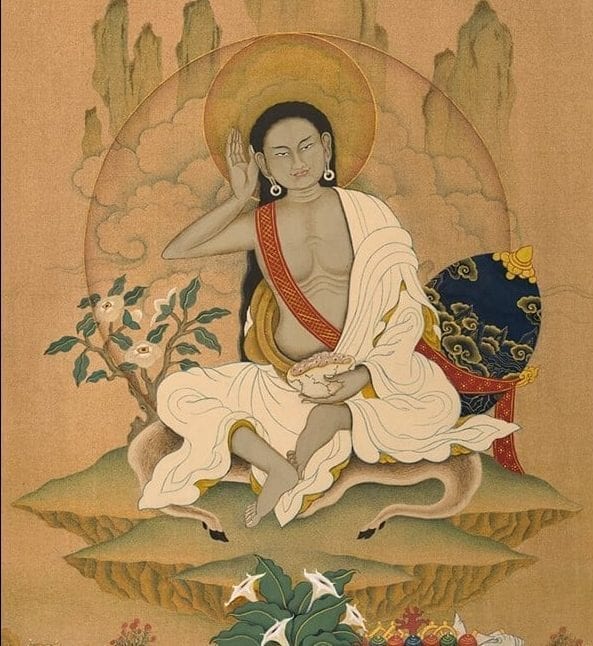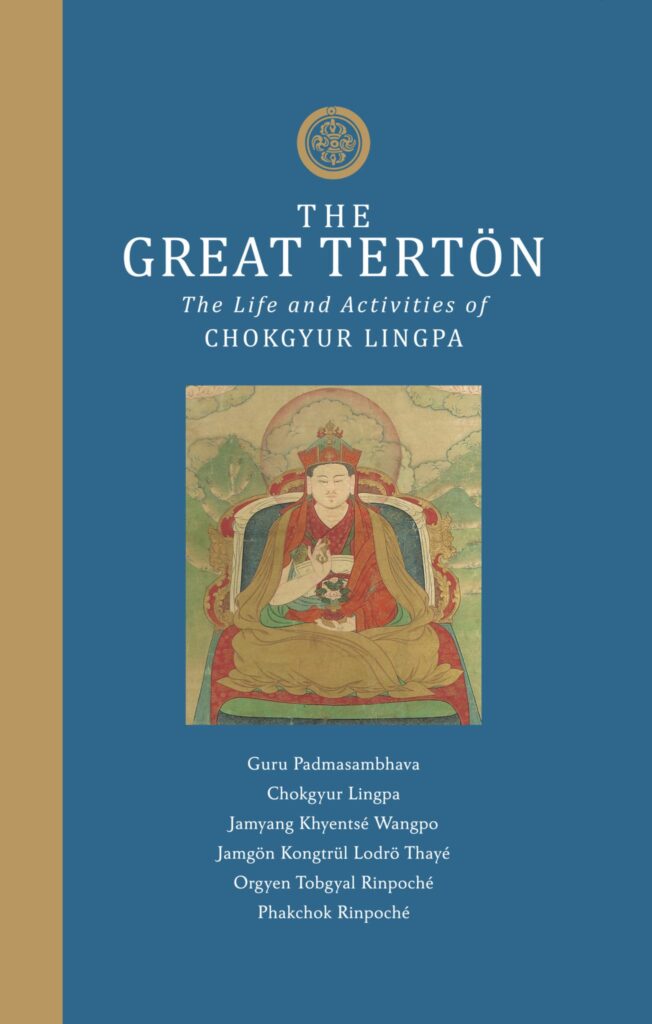Reading namtars can be a way to inspire one to practice the Buddhadharma diligently. The term “namtar” (rnam thar) is a shortening of the Tibetan nampar tharpa. In English we translate this as “complete liberation.” This in turn translates to the Sanskrit term vimokṣa, or “liberation”. Thus a namtar is more than a mere biography. Authors of namtars focus on the spiritual development of the individual rather than the mundane details of their lives. Therefore when we read a namtar we don’t focus on questions of historical accuracy. Instead, we approach such texts understanding them to offer spiritual guidance. The 17th Karmapa recently stated that namtars are “something to keep in your heart.”
Self-Liberation Accounts
In Tibetan literature we also find a number of rang nam (rang rnam) “self-liberation” accounts that realized masters left behind for the benefit of their followers. Again, to label these as autobiographies overlooks the profundity of the instructions contained in these volumes. Many great masters of the Tibetan tradition have left us such works. We can appreciate the value of these as instruction manuals when we reflect on the reminder of 155th century Sakya master Taktsang Lotsāwa Sherab Rinchen (stag tsang lo tsA ba shes rab rin chen). The great fifth Dalai Lama quoted this scholar as having advised writers of rang nam not to praise themselves or defame others, but to honestly state their own character without exaggeration or deprecation.
Many authors emphasize their humble origins in rang nam writings. And they may say that they have no particular qualities or realization. However, they then go on to calmly state their meditative experience. So as we read these stories we can appreciate the tradition of humility and yet expect important revelations about the path. On the other hand, some namtars written by students or followers of great lamas or yogis immediately emphasize the extraordinary qualities of the individual.
Reading Namtars Follows the Tradition of Reading Buddha’s Lives
In the Buddhist tradition, we find inspiring liberation histories from an early date. Buddhacarita, or acts of the Buddha, was composed in poetic form. The Buddha’s life story appears in various vinayas as well as in the famous verse and prose sutra Lalitavistara. Jātaka tales provide lessons from the former lives of the Buddha and serve as important teaching tools throughout Buddhist countries. Many temples and stūpas feature carvings or paintings illustrating the lives of the Buddha.

Chronicles written in many Buddhist countries contain the history of the Buddha and key figures. In addition, avadānas (Pali apadānas), or “heroic deeds” tales provide inspiration from the lives of the Buddha’s early disciples. Many of these tales stress the importance of a simple act of generosity, or a single line of teaching that became the first event in a causal chain resulting in liberation. They tell us how to practice the path and offer clear moral and ethical advice. We know from historical evidence that many of these poetic works were performed by monastic casts in front of Buddhist monuments in India and beyond. The tales thus served a key function in transmitting important doctrinal ideas to wider audiences.
Namtars Inspire Us to Practice
Nowadays, when we read such stories, we too can reflect on the amazing opportunity of our precious human existence. Inspired by the success of others, we can form the intention to practice diligently as these men and women before us have done. Reading namtars can help us when we are facing difficulties, or frustration on our own path. When we think that things are tough for us, we can turn to these pages and witness the struggles these individuals overcame. This gives us confidence that we can overcome our own small problems.
As a genre of Tibetan literature, namtar seems to have become important around the eleventh century. However, in Dunhuang manuscripts scholars have found that even in the earlier period of diffusion of the Dharma, careful records were kept of lineages and textual transmission. Thus it is clear that Tibetans were interested in preserving historical links even if they took up the writing of individual liberation stories somewhat later in their history.
As modern individuals we can sometimes find the details of these stories confusing and impossible to believe. Academic historians complain about inaccuracies and repetitive borrowing from previous texts. Miracles abound and the physical constrictions of our known experience regularly falls apart. Yet these seeming inconsistencies, if we remain open-minded, provide excellent teaching methods. Reading namtars requires us to let go of the attachment to “facts.” We can then accept possibilities and allow ourselves to be open to alternative versions of reality. This itself is a crucial step in mind training.
Reading namtars offers the careful student not only marvels and exciting stories. Indeed, namtars serve as spiritual guidebooks, full of practical observations and instructions. We can benefit from reading of the liberation of arhats, the training of bodhisattvas, and the enlightened activity of mahāsiddhas. The reader obtains an unusual insight into the view and practice of a liberated being. If we observe carefully, we can see where obstacles arise for a practitioner and what antidotes can be effective. The examples in these tales may seem extreme–but if we’re honest with ourselves, don’t we sometimes think of our emotions as ugly or repulsive demons with whom we wrestle?
Namtar: Outer, Inner and Secret
Namtars divide into three sections: the outer, inner and secret. Outer namtars usually give the more biographical portrait of the individual. Often these details may be very sketchy–the mundane matters are skipped over in rapid fashion. Inner namtars focus on the spiritual training including lists of teachers and of empowerments and transmissions, and practices. This portion of the liberation story assures the reader of the lineage transmissions and authenticity of practice.

These webs of connection also provide us, as practitioners, with a sense of interdependence and of continuity. We can situate ourselves and our own practice within a tradition populated by these realized beings who came before us.
Reflection Question
Have you read any particularly inspiring namtars? Why did you find these stories so important? How can you apply the lessons from that namtar to your own practice? If you have read a namtar that you found inspirational, please mention it in the comments section below. Your suggestions might be helpful to a dharma brother or sister looking for additional support!










Responses
Thanks so much !
[…] and other great masters, this helps us to light the fire of devotion. Life stories are known as namtars, or “stories of liberation” and they inspire us by describing how those who follow the […]
… [Trackback]
[…] Read More Infos here: samyeinstitute.org/sciences/philosophy/reading-namtars/ […]
… [Trackback]
[…] Read More Information here to that Topic: samyeinstitute.org/sciences/philosophy/reading-namtars/ […]
… [Trackback]
[…] Find More here on that Topic: samyeinstitute.org/sciences/philosophy/reading-namtars/ […]
… [Trackback]
[…] Here you will find 85207 more Information on that Topic: samyeinstitute.org/sciences/philosophy/reading-namtars/ […]